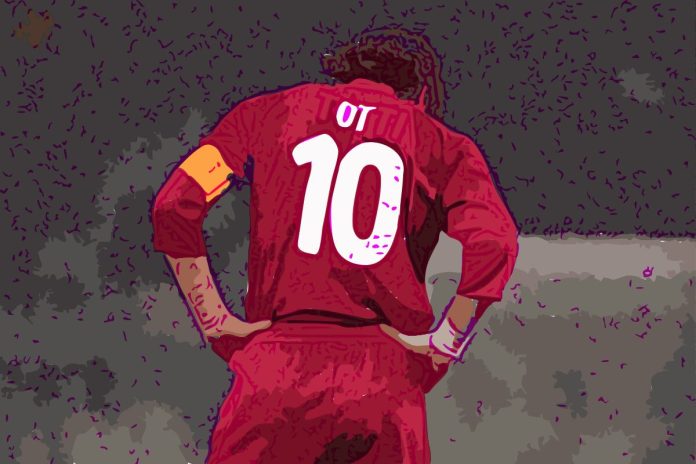Giving more importance to the tactics of this beautiful game is the main motive of this website and in doing so, it is important to give full credits to the best manager who has mastered his side and tactics throughout the whole season in a consistent basis. This piece is about Gian Mario Gasperini whom we think is the best Serie A Manager for the season 2016/17.
Atalanta had a spectacular Serie A campaign, finishing fourth in the league (their highest ever finish), thereby qualifying for the UEFA Europa League in the process. Gian Mario Gasperini deserves the major credit, if not the full credit for achieving a truly remarkable feat which saw the Oribici (as Atalanta are nicknamed) finish above both the historically famous Milan clubs who also happen to be arch rivals of Atalanta.
Gian Mario Gasperini was appointed as the manager of Atalanta on June 14, 2016 replacing the outgoing Eduardo Reja who had managed to lead the team to a respectable 13th place finish in the 2016-17 season. Gasperini had earlier managed teams like Inter Milan, Genoa etc where his teams were noted for an attacking brand of football.
After a stuttering start to the season, Atalanta put in some impressive performances which catapulted the team from Bergamo to the fourth place. What truly is remarkable is Gasperini achieved such a feat with a bunch of youngsters who had made their way through the Atalanta youth setup. Players like Roberto Gagliardini had been at the club since 2001. Emergence of young talent like Franck Kessie, Andre Conti, Mattia Caldara and Roberto Gagliardini (later joined Inter Milan), who all were decisive in the club’s historic season along with experienced players like Rafael Toloi and the enigmatic Alejandro Papu Gomez.
Gasperini has gained so much respect and popularity from the fans and the club management. Atalanta president Antonio Percassi even urged Gasperini to “stay for life” at Bergamo, ““stay here for life! Bergamo loves you, you have given the team a magisterial style of football” at the end of the season celebrations.
TACTICS OVER THE SEASON
Gasperini used his traditional 3-4-3 at Atalanta., which shifted to a 5-2-1-2 while defending. After a string of impressive results, Gasperini stuck with the squad, rotating the team only in case of injuries and suspensions. The club play one of the most beautiful brands of football in Italy. With an average of 50% possession and 81% passing accuracy it is safe to say that passing and linking up was one of the key aspects of the Atalanta game.
The ball was played out of defence, with center-backs starting out attacks from their third. Spinazolla and Andrea Conti were the wingbacks with Andrea Masiello, Rafael Toloi and the impressive Mattia Caldara being the regular centerbacks. Franck Kessie and Swiss midfielder Remo Freuler formed the central midfield duo. Jasmin Kurtic and Alejandro Gomez played in the right and left side half space respectively with Andrea Petagna leading the line. Until his departure, Gagliardini was played on a rotational basis with Kessie and Freuler.
STAGES OF THE SEASON
Early Winless Form (August – Late September 2016)

Atalanta formation against Lazio on the opening day of the season
Created using TacticalPad
Atalanta endured a torrid start to the season suffering 4 losses from the first games including a 3-0 thrashing at the hands of Cagliari. The only win was a 2-1 home victory over Torino. In these 5 games, Gasperini played established senior players of the squad instead of youth players. The above graphic displays the Atalanta line-up predominantly used in the first 5 games.
THE UNBEATEN RUN, THE RENAISSANCE AND THE FINISH (Late Sep – end of season)
Gasperini, with his future at stake, acted by his instincts and played a young inexperienced side against the brilliant Napoli side. The gamble paid off as his side came out as shock winners defeating Napoli by a solitary goal. This win started a run off 9 games without defeat for Atalanta which included 8 wins, with famous wins over AC Milan and Inter on their way. The run ended after a 1-3 loss to eventual champions Juventus. The club however played consistently well after that to finish fourth.
Etrit Berisha replaced Sportiello in goal. Caldara and Masiello replaced Zukanovic and Raimondi. Drame was replaced by the versatile Spinazzola, while Kurtic took up his place in the right hand half space. Gagilardini, Freuler and Kessie(any two) played in the central midfield. Gomez stayed at the left half space while Paloschi was replaced by the young Andrea Petagna.

Atalanta formation against Inter Milan (Oct 23, 2016)
The above graphic shows Atalanta’s lineup in their 2-1 victory over Inter Milan. The wing backs offer natural width in this system forming triangles and diamonds across the pitch. While attacking the shape is a 3-4-2-1 with Petagna being the target man. While defending it becomes a 5-2-1-2 with Kurtic playing behind Gomez and Petagna. The team defends very deep usually.
Against possession based teams, Atalanta uses a 3-4-1-2 even during the attacking phase to ensure stabililty in the midfield third with Kurtic dropping deep behind Gomez and Petagna. Defensively the deep blocks ensure less goals are conceded and the team soaks under pressure rarely giving up leads. In the home game against Napoli, the team became ultra-defensive after Petagna gave them the lead. The below graphic shows the Atalanta lineup in the 1-0 victory over Napoli.

Atalanta formation against Napoli (Oct 2, 2016)
Atalanta were brilliant in maintaining leads and playing under pressure. They rarely lost a game in which they had taken a lead. They also turned up in the big games. The team was also particularly brilliant in playing through the wings and shifted to either sides of the pitch with relative ease. With Conti on the right, they tended to attack through the right, with Kurtic drifting inside. But on the left hand side both Spinazzola and Gomez played out wide occasionally with the other drifting in to the centre.
The presence of creative players like Gomez, Kurtic and Kessie meant the club created a lot of scoring chances. Conti soaring through the right hand side was an added advantage. As Serie A is very physical, winning headers proved tough. So instead of direct crosses, Atalanta played cut back ground crosses through the wing. Conti giving a cut back cross and Gomez scoring it was a familiar sight. Defensively the club looked to win the ball quickly after losing it, thereby not giving teams a chance to build up well. Individually Alejandro Gomez and Andrea Conti were the star performers of the season. Andrea Conti was voted as the Serie A Defender for the season.
DEFENSIVE PHASE
Atalanta’s marking was done in a man oriented and aggressive manner. Almost all the players mark their direct opposition tightly, which sometimes led to staggered positioning. The center backs also tend to leave their line to mark the opposition usually. The marking also varied according to the opposition. For example in the game against Juventus, all the Juventus midfielders and attackers were aggressively man marked but against Napoli, they man marked centrally , leaving the full backs free.
This man oriented pressing and counter pressing saw the opponents lose the ball frequently. All the possession based sides like Juventus, Napoli etc struggled against Atalanta’s defensive approach as their creativity and intensity in passing was cut short in this system. Atalanta also defend deep stacking numbers in their final third when opponents are attacking.

In the 1-0 victory over Napoli, the fullbacks were left free, while the central players were marked heavily. Creative forces like Hamsik were thus closed down and the club was able to notch up a 1-0 win. The below image shows the man marking against Napoli.

POSSESSION AND ATTACKING PHASE
Atalanta usually prefer to build up from the back. The ball circulates between the central defenders and the central midfielders constantly before it gets on to the attacking midfielders. The constant inter-passing disturbs the opposition shape through which most of the chances are created. The wingbacks give the team the much needed width. Conti stays wide with Kurtic drifting on the right hand side.
But on the left side, there is interchanging of roles. With the fullbacks creating natural width and the constant passing in the centre, Atalanta look to have 4 men in front of and behind the midfield (2 central midfielders and 2 attacking midfielders) thereby creating the possibility of an overload. The presence of 3 compact central defenders also aids the build up play.
The wing play of the team is also something that needs to be mentioned. The speed at which the team shifts the ball through the wing is dangerous and it is tough to defend. Plus the cut back crossing system also ensures the team plays to its strengths. Counterpressing also helps them in restarting attacks quickly and the Atalanta team were pretty good in stealing the ball from opposition midfield.
The passing in the centre is helped by the creativity in the team. Alejandro Gomez, Jasmin Kurtic and Kessie in particular impressed with their dangerous interplay and movement which was aided by their creativity. Another feature of Atalanta’s to note was their prowess in scoring from set pieces.

CONCLUSION
Atalanta enjoyed their best ever season ending with a record 72 points in 38 games. After their horror start Atalanta put together a string of impressive results to enjoy one of the best seasons in club history. Gasperini brought together a young unknown team full of youngsters and turned them into super-achievers within a year. The club improved from 13th place to 4th place in the league.
They also played a possession based style which is tough to implement in the Italian League. He was also tactically flexible and his trust and belief in the youth players coming through the famed Atalanta academy was a key reason for this success. He also signed a new long term contract with the club. Due to his contributions towards the success of Atalanta, he is Football Bloody Hell’s Serie A Manager of the Year 2016-17.


